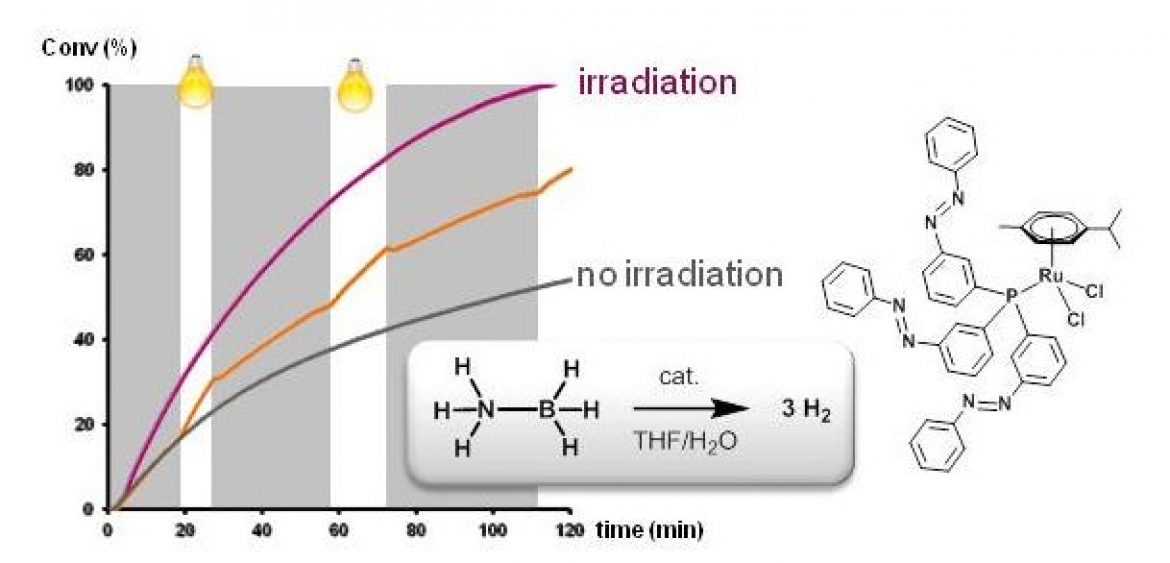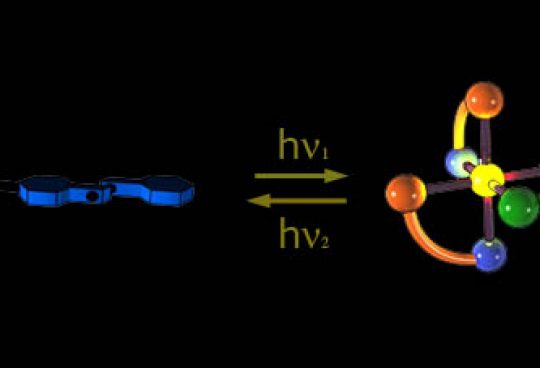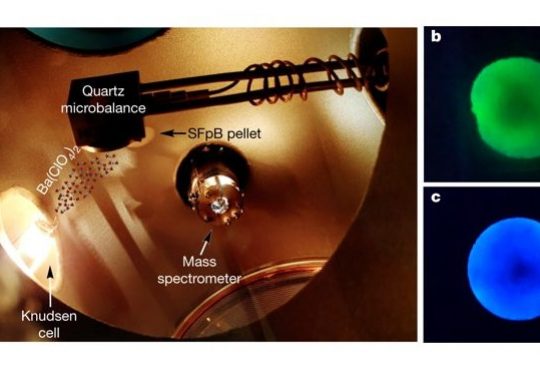Our first example of a photo-controled catalyst for hydrogen generation from ammonia-borane just published in Dalton Transactions.
Eight new ruthenium(II) half-sandwich complexes containing azobenzene-appended pyridine (1), bipyridine (2–5) and phosphine (6 and 7) ligands have been synthesized and fully characterized. UV-vis spectroscopic studies showed that the trans-to-cis photoisomerization was strongly inhibited upon coordination to the metal centre in azopyridine-derived ligands 1 and 2, but it remained efficient in azobenzene-appended bipyridine (3–5) and phosphine (6 and 7) ligands. The complexes were tested as precatalysts for photo-controlled hydrogen generation by hydrolytic decomposition of ammonia-borane (AB). In situ irradiation of the reaction mixtures of compounds [Ru(p-Cym)(6)Cl]Cl and [Ru(p-Cym)(7)Cl]Cl induced a clear change in the catalytic reaction rate, serving as a proof of concept for light-controlled hydrogen generation.









Sorry, the comment form is closed at this time.